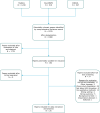Delineating family needs in the transition from hospital to home for children with medical complexity: part 1, a meta-aggregation of qualitative studies
- PMID: 38082309
- PMCID: PMC10714518
- DOI: 10.1186/s13023-023-02942-9
Delineating family needs in the transition from hospital to home for children with medical complexity: part 1, a meta-aggregation of qualitative studies
Abstract
Background: Advances in diagnostic and therapeutic interventions for rare diseases result in greater survival rates, with on the flipside an expanding group of children with medical complexity (CMC). When CMC leave the protective hospital environment to be cared for at home, their parents face many challenges as they take on a new role, that of caregiver rather than care-recipient. However, an overview of needs and experiences of parents of CMC during transition from hospital-to-home (H2H) is lacking, which hampers the creation of a tailored H2H care pathway. Here we address this unmet medical need by performing a literature review to systematically identify, assess and synthesize all existing qualitative evidence on H2H transition needs of CMC parents.
Methods: An extensive search in Medline, PsychINFO and CINAHL (up to September 2022); selection was performed to include all qualitative studies describing parental needs and experiences during H2H transition of CMC. All papers were assessed by two independent investigators for methodological quality before data (study findings) were extracted and pooled. A meta-aggregation method categorized the study findings into categories and formulated overarching synthesized findings, which were assigned a level of confidence, following the ConQual approach.
Results: The search yielded 1880 papers of which 25 met eligible criteria. A total of 402 study findings were extracted from the included studies and subsequently aggregated into 50 categories and 9 synthesized findings: (1) parental empowerment: shifting from care recipient to caregiver (2) coordination of care (3) communication and information (4) training skills (5) preparation for discharge (6) access to resources and support system (7) emotional experiences: fatigue, fear, isolation and guilt (8) parent-professional relationship (9) changing perspective: finding new routines and practices. The overall ConQual Score was low for 7 synthesized findings and very low for 2 synthesized findings.
Conclusions: Despite the variability in CMC symptoms and underlying (rare disease) diagnoses, overarching themes in parental needs during H2H transition emerged. We will augment this new knowledge with an interview study in the Dutch setting to ultimately translate into an evidence-based tailored care pathway for implementation by our interdisciplinary team in the newly established 'Jeroen Pit Huis', an innovative care unit which aims for a safe and sustainable H2H transition for CMC and their families.
Keywords: Care pathway; Children with medical complexity; Hospital-to-home transition; Meta-aggregation; Parental needs; Qualitative research; Systematic review.
© 2023. The Author(s).
Conflict of interest statement
The authors declare that they have no competing interests.
References
Publication types
MeSH terms
LinkOut - more resources
Full Text Sources
Miscellaneous


